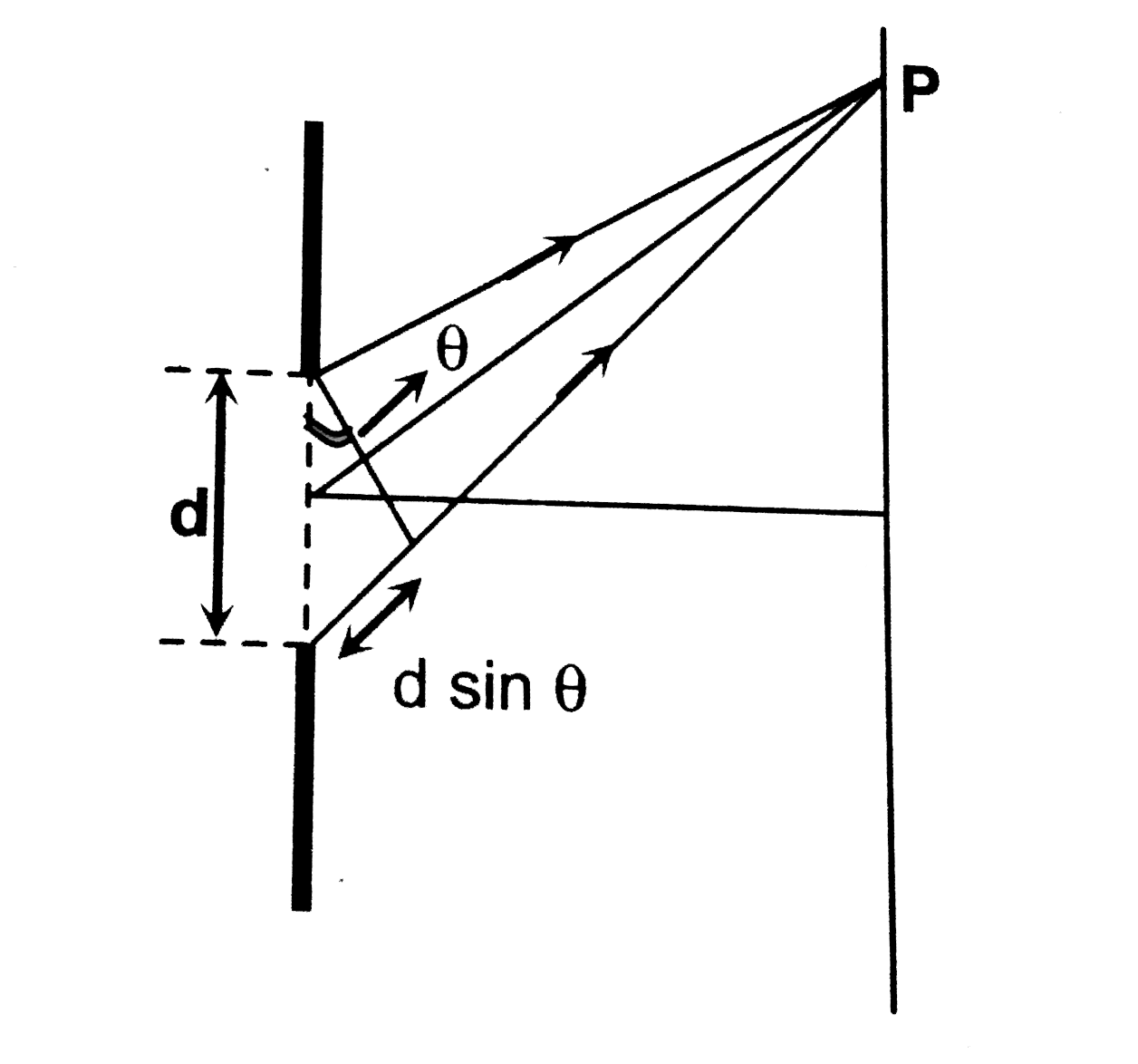A parallel monochromatic beam of light is incident normally on a narrow slit. A diffraction pattern is formed on a screen placed perpendicular to the direction of the incident beam. At the first minimum of the diffraction pattern, the phase difference between the rays coming from the two edges of the slit is
(a) 0
(b) π/2
(c) π
(d) 2
The correct Answer is:D
As in case of diffraction of mono-chromatic light from a single slit, position of minima is given by:

dsinθ=nλ
So, at the position of first minimum.
Δ=dsinθ=λ (as n=1) and hence the phase difference between the rays coming from the two edges of the slit:
Δϕ=2πλ(Δ)=2πλ(λ)=2π
Topper's Solved these Questions
- BOOK - A2ZCHAPTER - WAVE OPTICSEXERCISE - Section B - Assertion Reasoning23videos
WAVE OPTICS
- BOOK - A2ZCHAPTER - WAVE OPTICSEXERCISE - AIPMT/NEET Questions22videos
WAVE OPTICS
- BOOK - A2ZCHAPTER - WAVE OPTICSEXERCISE - Polarisation Of Light37videos
WAVE OPTICS
- BOOK - A2ZCHAPTER - SOURCE AND EFFECT OF MAGNETIC FIELDEXERCISE - Section D - Chapter End Test30videos
SOURCE AND EFFECT OF MAGNETIC FIELD
Similar Questions
A parallel beam of light of wavelength l is incident normally on a narrow slit. A diffraction pattern is formed on a screen placed perpendicular to the direction of the incident beam. At the second minimum of the diffraction pattern, the phase difference between the rays coming from the two edges of slit is
View SolutionConsider Fraunhoffer diffraction pattern obtained with a single slit illuminated at normal incidence. At the angular position of the first diffraction minimum the phase difference (in radians) between the wavelets from the opposite edges of the slit is
View Solution
Knowledge Check
- Question 1 - Select One
Parallel monochromatic beam of light is incident normally on a narrow slit. A diffraction pattern is formed on a screen placed perpendicular to the direction of the incident beam. At the first minimum of the diffraction pattern, the phase difference between the rays coming from the two edges of slit is
AzeroBπCπ2D2π - Question 2 - Select One
Parallel monochromatic beam of light is incident normally on a narrow slit. A diffraction pattern is formed on a screen placed perpendicular to the direction of the incident beam. At the first minimum of the diffraction pattern, the phase difference between the rays coming from the two edges of slit is
AzeroBπCπ2D2π - Question 3 - Select One
A parallel monochromatic beam of light is incident normally on a narrow slit. A diffraction patten is formed on a screen placed perpendicular to the direction of incident beam. At the first maximum of the diffraction pattern the phase difference between the rays coming from the edges of the slit is
A(a) 0B(b) π2C(c) πD(d) 2π
A parallel monochromatic beam of light is incident normally on a narrow slit and the resulting diffraction pattern is formed on a screen placed perpendicular to the direction of incident beam. At the first minimum of the diffraction pattern, the phase diffraction between the waves coming from the edges of the slit is
View SolutionA parallel beam of monochromatic light is incident normally on a slit. The diffraction parttern is observed on a screen placed at the focal plane of convex lens. If the slit width is increased , the central maximum of the diffraction pattern will
View SolutionConsider Fraunhoffer diffraction pattern obtained with a single slit illuminated at normal incidence. At the angular position of the first diffraction minimum the phase difference (in radians) between the wavelets from the opposite edges of the slit is
View SolutionLight of wavelength λ=5000Å falls normally on a narrow slit. A screen is placed at a distance of 1m from the slit and perpendicular to the direction of light. The first minima of the diffraction pattern is situated at 5mm from the centre of central maximum. The width of the slit is
View SolutionMonochromatic plane waves of light are incident normally on a single slit. Which option correctly shows the diffraction pattern observed on a distant screen?
View Solution

